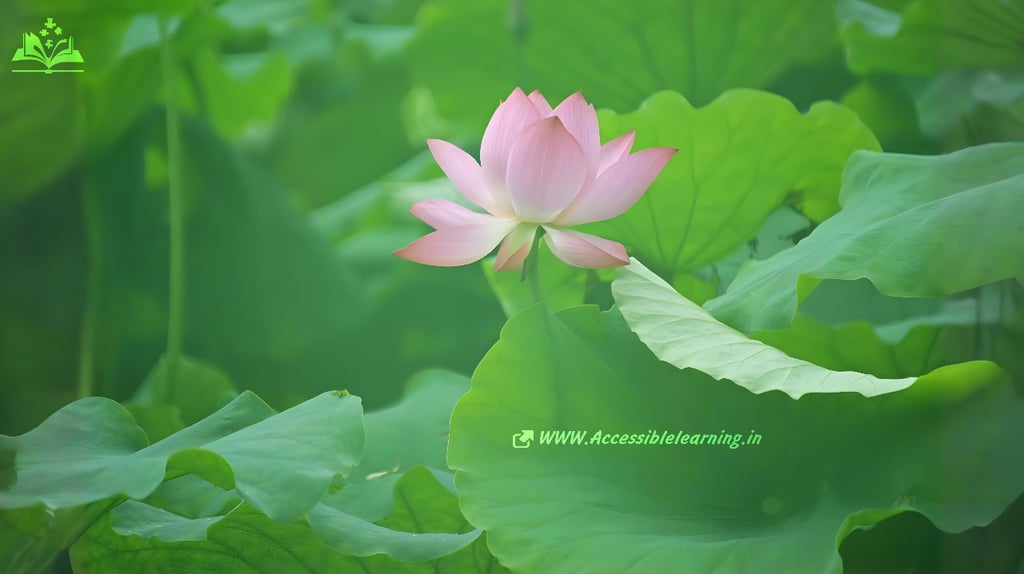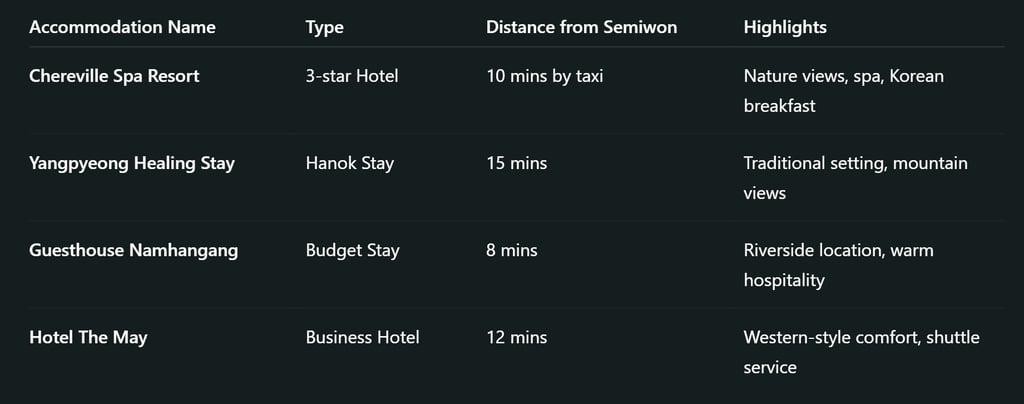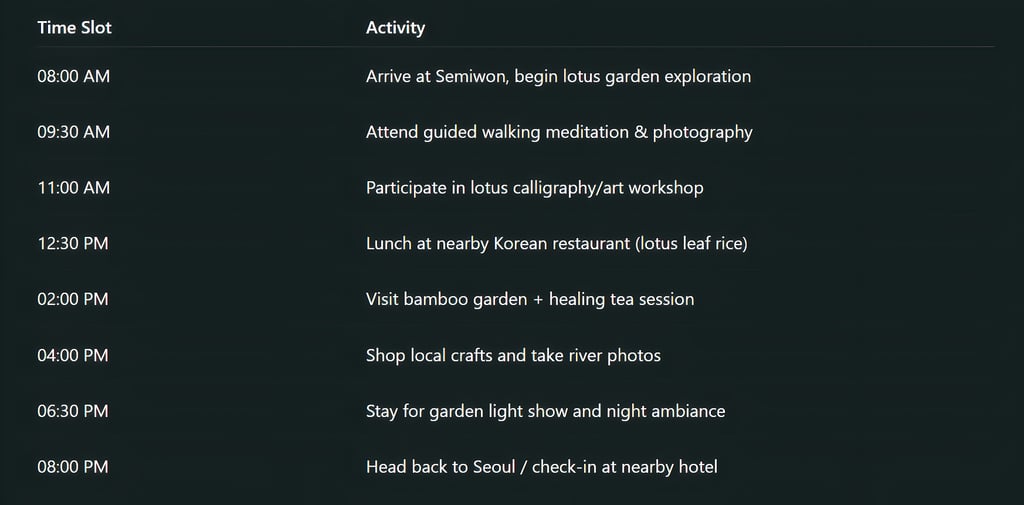
Lotus Flower Cultural Festival (Semiwon Garden): A Blossoming Celebration of Korean Nature and Tradition
Discover the Lotus Flower Cultural Festival at Semiwon Garden in Korea—an enchanting celebration of lotus blooms, eco-conscious living, traditional art, and mindful travel. A perfect summer retreat for nature lovers and cultural explorers.
CULTURE/TRADITIONEVENT/SPECIALENVIRONMENTSOUTH KOREATRAVEL LIFE
Kim Shin
7/23/20254 min read


Every summer, South Korea’s Lotus Flower Cultural Festival at Semiwon Garden transforms the serene botanical landscape of Yangpyeong into a vibrant celebration of nature, culture, and tranquility. Held in Semiwon Garden, this festival attracts visitors from across the globe who seek to witness the symbolic elegance of lotus flowers in full bloom. But beyond its stunning visuals, the festival is deeply rooted in Korean cultural heritage, Buddhist symbolism, and environmental appreciation.
What is the Lotus Flower Cultural Festival?
The Lotus Flower Cultural Festival (연꽃문화제) is an annual event held at Semiwon Garden (세미원), located in Yangpyeong County, Gyeonggi Province, South Korea. The name "Semiwon" translates to “a garden to purify the mind with water and flowers,” which perfectly encapsulates the festival’s essence.
Taking place typically between late June and mid-August, when lotus flowers are in full bloom, this event is not just a visual feast but also a cultural immersion. Visitors walk through a peaceful sanctuary of lotus ponds, water lilies, sculptures, traditional music, and art installations.
Why the Lotus Flower?
The lotus holds significant cultural and spiritual meaning in Korean, Chinese, Indian, and Buddhist traditions. Often emerging pristine from muddy waters, it represents purity, rebirth, enlightenment, and inner peace.
In Korean Buddhism, the lotus symbolizes the human journey—rising above challenges (mud) to reach spiritual clarity (bloom). Hence, the festival reflects both natural beauty and philosophical depth.
Main Highlights of the Festival
Lotus Flower Bloom Exhibition
Over 50 species of lotus flowers from Korea and around the world cover the ponds and gardens. These include:
Pink Sacred Lotus (Nelumbo nucifera)
Yellow lotus hybrids
Rare white and giant lotus species
Early morning visits offer the most breathtaking views as the flowers bloom with the sunrise.
Cultural Performances
Enjoy traditional Korean music (gugak), Buddhist meditation sessions, and instrumental concerts that echo through the gardens. The performances aim to harmonize with the natural surroundings and create a peaceful ambiance.
Art & Craft Workshops
Visitors can participate in
Lotus-themed calligraphy
Hanji (Korean paper) lotus lamp making
Natural dyeing using lotus leaves and flowers
These workshops blend artistry with mindfulness, making them popular with both adults and children.
Night Garden Light Show
As dusk falls, the garden transforms into a mystical wonderland with eco-friendly lights illuminating lotus ponds and bamboo forests. The reflections on the water are both mesmerizing and soothing.
Healing Programs
Lotus foot baths infused with petals and herbal oils
Tea meditation using lotus root and flower tea
Guided walking meditations in bamboo-lined paths
Eco-Conscious Exhibits
Semiwon promotes eco-friendly practices and wetland preservation awareness. Educational exhibits highlight the lotus plant’s role in natural water purification and sustainable garden design.
How to Get to Semiwon Garden
Location: 93, Gukchaebosang-ro, Yangseo-myeon, Yangpyeong-gun, Gyeonggi-do, South Korea
By Train: Take the Jungang Line from Yongsan Station (Seoul) to Yangpyeong Station (~1 hour 40 minutes). Then a short taxi or local bus ride to Semiwon.
Shuttle services are available during the festival weekends.
Travel Tips & Visitor Guide
Best time to visit: Early morning (6–9 AM) for fresh blooms.
What to wear: Comfortable shoes, hats, and breathable clothing.
Photography spots: Lotus bridges, bamboo garden trails, and the floating flower deck.
Souvenirs: Handmade lotus soaps, flower teas, eco-crafts, and ceramic lotusware.
Nearby Attractions
After the festival, visitors can explore
Dumulmeori: A scenic riverside merging of Bukhangang and Namhangang rivers
Yangpyeong Rail Bike: A fun, scenic pedal ride along the riverbanks
Yeojubo Ecological Park: Birdwatching and tranquil wetland walks
Cultural & Environmental Impact
The Lotus Flower Festival isn't just about beauty—it's a celebration of coexistence. The event:
Promotes traditional Korean aesthetics
Revives interest in eco-friendly gardening
Encourages slow tourism and mindful travel
Supports local artisans and farmers
The Lotus Flower Cultural Festival at Semiwon Garden is more than a seasonal festivity—it's a mindful journey through Korea’s natural and cultural heritage. Whether you’re a photographer, a traveler in search of serenity, or a cultural enthusiast, this blooming oasis offers a deeply rewarding experience that refreshes both body and soul.
So next summer, walk among the lotus blossoms, sip tea under a willow tree, and let the gentle beauty of Semiwon help you reconnect with the stillness within.




Local Food Guide
While Semiwon doesn’t have full-scale restaurants inside, the festival area and nearby Yangseo village offer traditional Korean dishes:
Lotus Leaf Rice (연잎밥): A festival specialty, steamed rice with chestnuts and dates wrapped in lotus leaves.
Dongchimi Noodles (동치미국수): Cold noodles in fermented radish broth—a summer favorite.
Buchu Jeon (부추전): Korean chive pancakes, often sold at roadside eateries during the festival.
Lotus Tea & Sweets: Try the lotus root chips, honeyed flower cookies, and homemade yuzu-lotus jelly in small cafes around the garden’s entrance.
Accessibility & Family-Friendly Facilities
Wheelchair-friendly: Paved lotus trails and ramps provided
Stroller rental: Available at entrance desk
Rest areas: Bamboo rest stations and shade-covered picnic spots
Clean washrooms: With baby-changing facilities
Hydration booths: Free water refill stations and lotus tea kiosks
Cultural Etiquette for Festival Visitors
Dress respectfully: Avoid loud or overly casual attire, especially near spiritual zones.
No plucking: Never touch or pick lotus flowers.
Photography is allowed, but drones require permission.
Silence is appreciated during meditations or traditional music sessions.
Recycle & compost bins are provided—Semiwon follows a zero-waste philosophy.
Nearby Hidden Gems to Explore
Dosan Seowon Confucian Academy (도산서원): A heritage site showcasing Korea’s educational legacy.
Namyangju Slow Life Town: For those interested in eco-living and sustainable farming practices.
Jarasum Island: Often hosts jazz and art events—great for a picnic and evening walk.
Subscribe To Our Newsletter
All © Copyright reserved by Accessible-Learning Hub
| Terms & Conditions
Knowledge is power. Learn with Us. 📚


